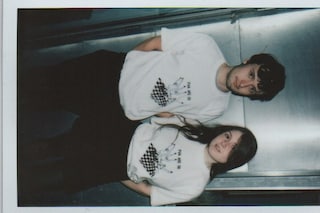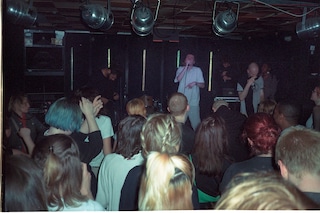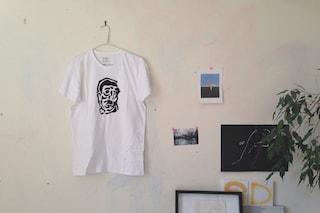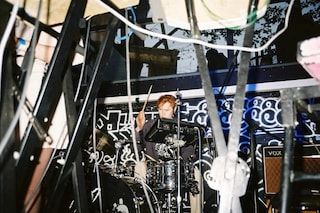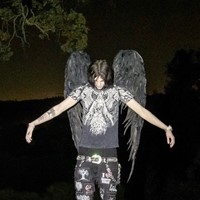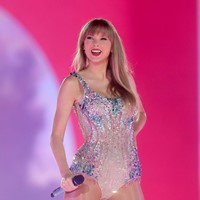We meet the DIY crew who gave an early platform to bands like Black Midi and Sorry when they were still just teenagers
In 2016, Darius Williams and GG Skips threw a party on a boat in east London. They’d made a zine together and wanted to put on an event, called Slow Dance, to help promote it, asking some of their mates’ bands to play. What they didn’t expect was for 300 people to turn up at the event in Royal Victoria Dock, a remote part of the city’s historic docklands. Clearly, they were onto something.
“The bouncer was misled by our name and thought we were throwing an actual slow ballroom dance,” Williams and Skips, now in their early 20s, recall today. “They were pretty shocked when hundreds of teenagers turned up.” The decision to use a boat venue was, they insist, a practical one. “It was a matter of using any space that would allow underage people who didn’t have much money. The first shows ended up being in these unconventional venues, just because everyone was a teenager.”
One of the bands who played that first Slow Dance show was Sorry, then called Fish, making their debut live appearance. Today, the band are one of the more prominent and exciting acts to emerge from London’s burgeoning underground indie scene, and are releasing their debut album through Domino in March. Appropriately, given the fluidity of the scene both around the group and around Slow Dance, GG Skips is not only a fan and promoter of the band, but a member.
They were just the first of many thrilling, unorthodox acts to receive an early platform through Slow Dance. Over the next five years, the collective would stage events across the capital, spotlighting a wealth of strange, powerful music – Mercury Prize nominees Black Midi, hyper-versatile producer and Mica Levi collaborator Coby Sey, and more – both at their shows and, eventually, through their record label. It’s an impressive track record for a grassroots project started by a pair of kids barely out of secondary school.
The label’s latest release is the fourth edition of their annual compilation series, Slow Dance ’19. It’s an expansive set, with 18 tracks showcasing the wide range of Slow Dance’s output, from Lynks Afrikka’s mischievous, plasticy techno-pop experiments to the altogether more earnest, acoustic aesthetic of Uncle Tesco. “The foundations of Slow Dance truly rely on close creative and personal relationships with our artists,” say Skips, Williams, and fellow core member Maddy O’Keefe (they answer questions as one collective voice, reflecting Slow Dance’s interdependent and collaborative outlook). “We put full support and trust into performers, engendering a sense of creative freedom. It’s all centred around trust and empowerment.”
Jude Woodhead, who records as Saint Jude and contributed the addictive synth track “Elementi” to the compilation, has been involved with Slow Dance since their early days. “I played one of their first events, at this warehouse thing in Fulham, I think,” he recalls. “I saw Khazali and Glows play at this boat party, got in touch with them, and played at their next event. I really liked how DIY it was, what they were doing. They were kids my age making the kind of art and music I rated, and putting on these sick nights without the help of anyone older.”
George Connolly, A&R at Young Turks (home of Sampha, The xx, and more), is another enthusiastic fan. “Slow Dance have been on super early and championed some of the most interesting and forward-thinking artists in London,” he says. “Their range of events, projects, and releases always challenge the norm. I’m always really excited to see what they’ve been working on.”
“There’s a joke we have, that the music we work with is ‘post-club’ – music influenced by clubbing, but made in a bedroom or with the sensibilities of more conventional band” – Slow Dance
The last decade saw streaming change our relationship with music, producing subcultures that weren’t tied to genre conventions or even geographical location. Many of the musicians close to Slow Dance were too young to have really been consuming music back when product, format, and payment were inextricable from one another, and have sometimes only ever experienced it as something more fluid and boundaryless. Waterbaby’s “i don’t want to sing, i don’t want to look” is a cocktail of kosmische synths, lilting vocals, and fluid, barely-there percussion, owing as much to contemporary avant-garde music like James Ferraro and Oneohtrix Point Never as Harmonia, Vangelis, or Enya. The contrast with a track like Uncle Tesco’s stripped-back confessional “Blind” seems stark, but this also takes a promiscuous approach to style and influence, all Nick Drake balladeering one moment, Suicide drum machines the next.
“There’s a joke we have, that the music we work with is ‘post-club’ – music influenced by clubbing, but made in a bedroom or with the sensibilities of more conventional band or guitar music,” say Skips and Williams. Indeed, the artists share a sense of spontaneity and collectivity that’s more often associated with club culture than it is traditional indie gigs. “Artists are blurring lines, constantly pushing against categorisation and escaping the boxes that journalists and marketers have been trying to cram them into. There are all these mutated ‘genres’ popping up, like ‘crank wave’, all this stuff that doesn’t mean much.” They’re interested in the pursuit of “truly new sounds” that “it would be almost insulting to try and classify”.
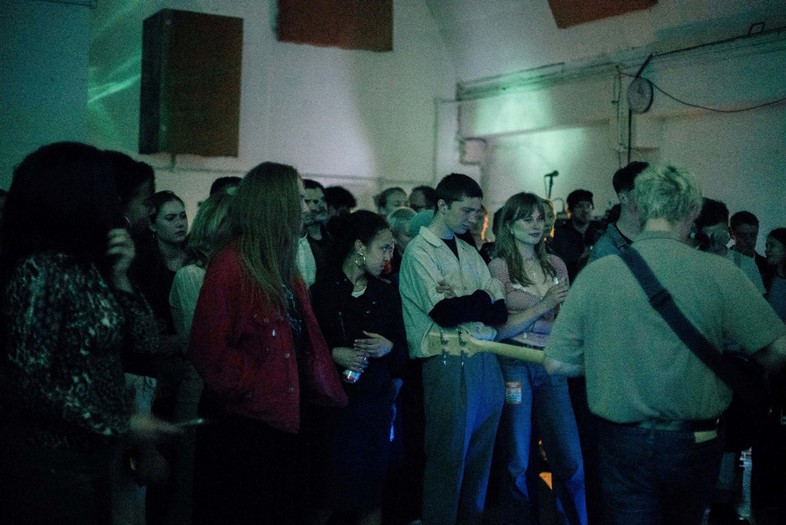
This fluidity extends into the day-to-day running of the company. Conventional music industry roles – artist, manager, producer, label boss – are paid little heed. “We all are incredibly close, it’s like a little family, constantly bouncing ideas off each other,” says Ella Harris of PVA, who are managed by the collective and whose members collaborate more widely with the extended Slow Dance circle. “There don’t seem to be many boundaries, everyone helps each other out, works on projects together, uses everyone’s individual talents to form a bigger picture.”
A network of visual artists, filmmakers and photographers (videographer Felix Bayley Higgins, director Kit Whalley Payne, designer Ellie Dempsey, and more) also surround Slow Dance, regularly contributing to and exhibiting at the live events. The core members are creatively active, too: as well as playing in Sorry, Skips releases solo electronic music as Glows (including a track on the compilation) and contributes sound pieces to events at the Royal Academy of Arts; O'Keefe works with promoter Bad Vibrations, venue programmer Lanzarote, and manages PVA and South London band Tiña; Williams works as a freelancer in the film industry.
The creative landscape has been in a near-constant state of flux since the internet upturned its fundamental structures, with many post-streaming subcultures expressing an increasingly narrow, dislocated relationship with community. Slow Dance are using similar methods and aesthetics to turn that logic on its head – and they bring a youthful playfulness to it, too. Peers and elders alike should be taking notes.

